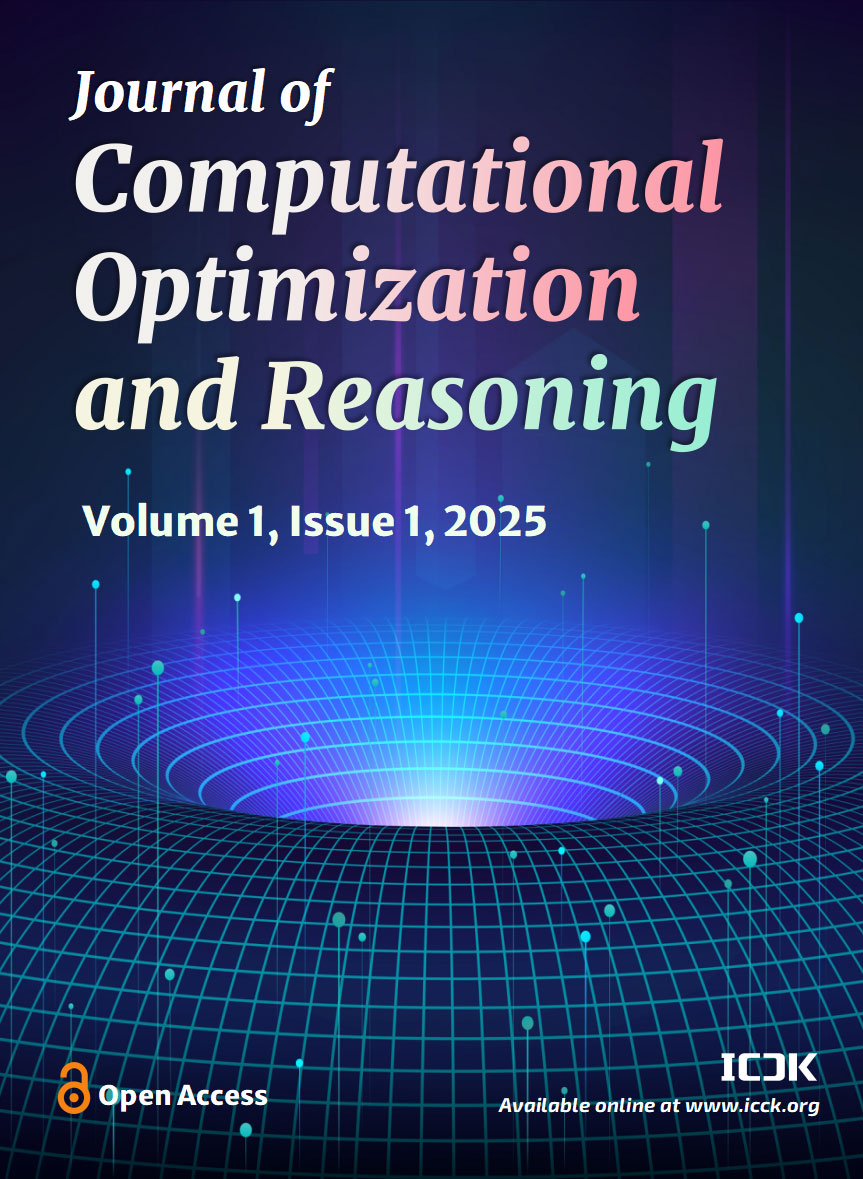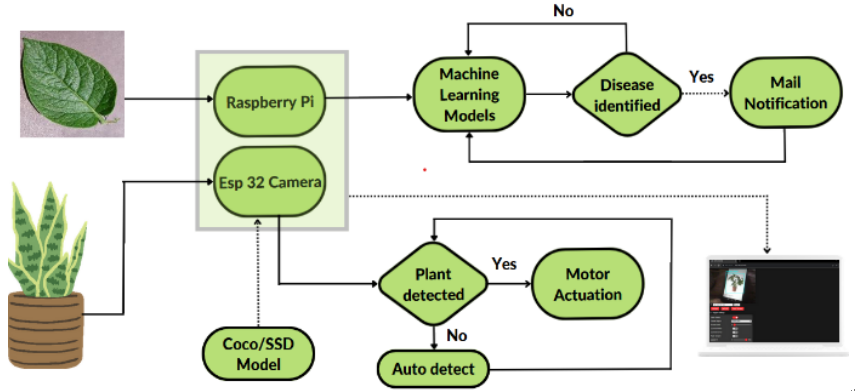Abstract
Agriculture plays a major role in India’s growth. Timely prediction of diseases will minimize their impact and improve productivity in agriculture. This work focuses on designing a rover-based system for automated plant disease detection. The rover can be utilized to detect plants without human intervention. The COCO/SSD model is used for object detection. After detecting the plant, the motor is actuated to move the rover near it. The “Plant Village” dataset is used to train the model. It consists of various images of healthy and diseased plants. In this project, we have used tomato, potato, corn, and grape images to train the model for disease identification. We have used various deep learning algorithms such as VGG16, VGG19, and AlexNet. Among these, AlexNet achieved the highest testing accuracy of 95.72%. The AlexNet model is used to detect plant leaf diseases. Using Python, the model detects the plant leaf disease and notifies the user. Simple Mail Transfer Protocol (SMTP) is used to send the captured image and the predicted disease to the user. The ESP32-CAM and Raspberry Pi were used to perform plant detection and disease identification. Thus, identifying diseases with the help of a rover will increase productivity and benefit farmers.
Data Availability Statement
Data will be made available on request.
Funding
This work was supported without any funding.
Conflicts of Interest
The authors declare no conflicts of interest.
Ethical Approval and Consent to Participate
Not applicable.
Cite This Article
APA Style
Madakannu, A., Giridhesh, R. K. V., & Chandran, S. (2025). Smart Farm Rover: Autonomous Plant Disease Detection and Classification with Machine Learning. Journal of Computational Optimization and Reasoning, 1(1), 3–10. https://doi.org/10.62762/JCOR.2025.626841
Publisher's Note
ICCK stays neutral with regard to jurisdictional claims in published maps and institutional affiliations.
Rights and Permissions

Copyright © 2025 by the Author(s). Published by Institute of Central Computation and Knowledge. This article is an open access article distributed under the terms and conditions of the Creative Commons Attribution (CC BY) license (
https://creativecommons.org/licenses/by/4.0/), which permits use, sharing, adaptation, distribution and reproduction in any medium or format, as long as you give appropriate credit to the original author(s) and the source, provide a link to the Creative Commons licence, and indicate if changes were made.


 Submit Manuscript
Edit a Special Issue
Submit Manuscript
Edit a Special Issue

 Copyright © 2025 by the Author(s). Published by Institute of Central Computation and Knowledge. This article is an open access article distributed under the terms and conditions of the Creative Commons Attribution (CC BY) license (https://creativecommons.org/licenses/by/4.0/), which permits use, sharing, adaptation, distribution and reproduction in any medium or format, as long as you give appropriate credit to the original author(s) and the source, provide a link to the Creative Commons licence, and indicate if changes were made.
Copyright © 2025 by the Author(s). Published by Institute of Central Computation and Knowledge. This article is an open access article distributed under the terms and conditions of the Creative Commons Attribution (CC BY) license (https://creativecommons.org/licenses/by/4.0/), which permits use, sharing, adaptation, distribution and reproduction in any medium or format, as long as you give appropriate credit to the original author(s) and the source, provide a link to the Creative Commons licence, and indicate if changes were made. 